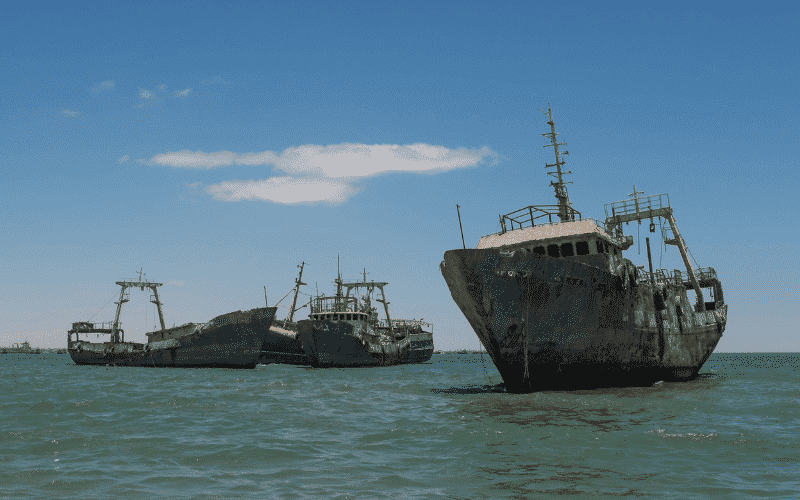

Nouadhibou is a major metropolis in the poverty-ridden North-west African country of Mauritania. Situated in the peninsula of Nouadhibou, after which it takes its name, the city is a vital hub of trade and commerce.
But alongside this stellar reputation, the port city has also gained an infamous distinction of being one of the largest ship graveyards in the world.
The city’s development goes back to the time when the country was occupied by French colonists. Its geographic suitability and easy accessibility via the maritime routes specifically attracted the attention of the colonists who not only developed it to thriving proportions but also christened it as ‘Port Etienne.’
Mauritania gained independence from France in the year 1960 and the port city was renamed to its present-day titular reference.


Although post-independence from France Mauritania’s economy was left shattered, Nouadhibou has continued to remain a thriving contributor to the country’s economy as most of the country’s export operations are channelized through its water gateways.
Various historical records cite that the port city became a vessel graveyard during the late 20th century. However, the idea of using the peninsula as a ship graveyard predates back to the days of the country’s French colonisation during the 20s and peaked to substantial heights during the 80s.
The country’s economic degeneration during the 80s forced the bureaucrats and maritime authorities to allow ship owners to dump their eroded ships in the waters surrounding the peninsula.
The exact number of such discarded Nouadhibou ships has varied quite extensively in the three decades that the location has been exploited as a vessel graveyard.
Iron in its ore form and fishing are two of Nouadhibou’s biggest exports. The discarded ships lying in the peninsular waters thus provide viable iron components to increase the city’s export operations.
In a similar fashion, the inlets of water between the vessels lying around have become a spawning locale for various kinds of fish.
These two aspects in turn act as sources of employment for the local population. These factors have also resulted in the Nouadhibou ships being regarded as indispensable by the locals, in terms of generating much-needed revenue and income.
The Mauritanian authorities have however taken several steps to ensure that the vessels are appropriately dismantled after taking due consideration of the adverse implications of the largest ship graveyard to the overall marine ecology.
Even though the discarded ships are a source of employment and revenue generation, marine salvage corporations are expected to begin their clean-up operations.
Such clean-up operations would potentially enhance the value of the port city while possibly easing some of the acute monetary crises plaguing the poorer sections of Mauritania’s and Nouadhibou’s economy.
Disclaimer: The authors’ views expressed in this article do not necessarily reflect the views of The Marine Learners. Data and charts, if used, in the article have been sourced from available information and have not been authenticated by any statutory authority. The author and The Marine Learners do not claim it to be accurate nor accept any responsibility for the same. The views constitute only the opinions and do not constitute any guidelines or recommendations on any course of action to be followed by the reader.










We believe that knowledge is power, and we’re committed to empowering our readers with the information and resources they need to succeed in the merchant navy industry.
Whether you’re looking for advice on career planning, news and analysis, or just want to connect with other aspiring merchant navy applicants, The Marine Learners is the place to be.